Boutique Business Plan Samples
-

Nail Salon Boutique Business Plan
download now -

Bridal Boutique Business Plan
download now -

Boutique Gym Business Plan
download now -

Boutique Fitness Studio Business Plan
download now -

Boutique Business Plan Template
download now -
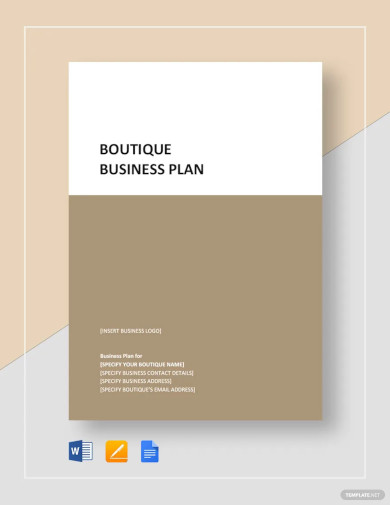
Sample Boutique Business Plan Template
download now -

Online Boutique Business Plan Template
download now -

Women’s Clothing Boutique Business Plan Template
download now -
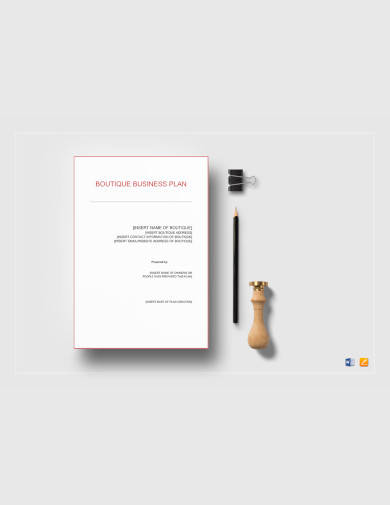
Boutique Business Plan Template
download now -

Basic Boutique Business Plan Template
download now -

Boutique Business Plan Executive Summary
download now -

Online Boutique Business Plan
download now -
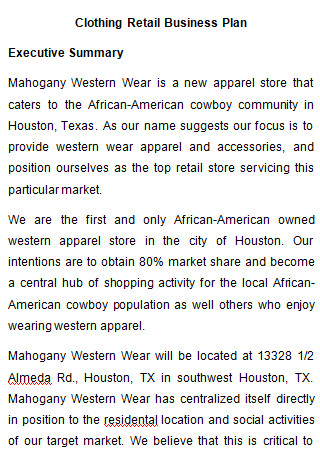
Clothing Retail Business Plan
download now -

Boutique Business Plan Cover Page
download now -
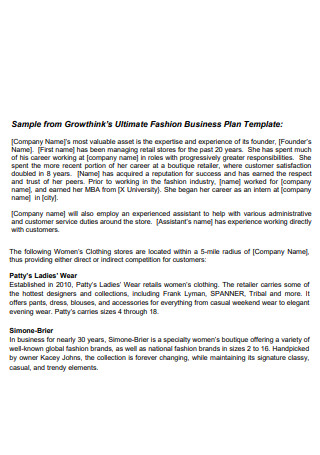
Fashion Boutique Business Plan
download now -

Privately Owned Boutique Operational Business Plan
download now -

Sample Boutique Business Plan
download now -

Boutique Business Plan Company Description
download now -

Women Designers Wear Business Budget Plan
download now -
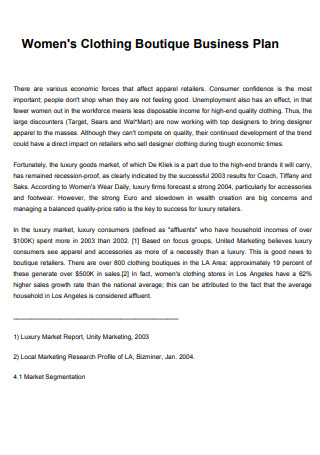
Womens Clothing Boutique Business Plan
download now -

Boutique Business Plan Example
download now -

Boutique Beverage Business Plan
download now -

Fashion Men’s Wear Boutique Plan
download now -

Sample Fashion Boutique Business Plan
download now -
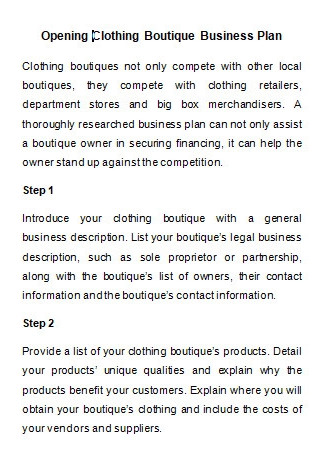
Opening a Boutique Business Plan
download now -

Women’s Boutique Shoe Store Business Plan
download now -
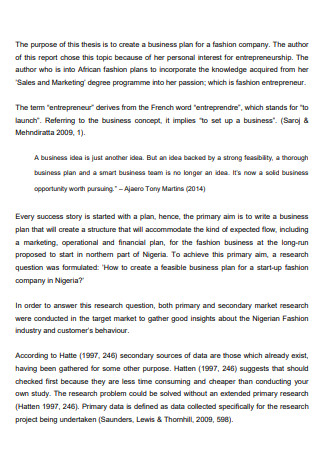
General Boutique Business Plan
download now -

Student Boutique Business Plan
download now -

Standard Boutique Business Plan
download now -

Food Boutique Business Plan
download now -

Baby Boutique Business Plan
download now -

Boutique Business Plan in PDF
download now
FREE Boutique Business Plan s to Download
Boutique Business Plan Format
Boutique Business Plan Samples
What is a Boutique Business Plan?
Elements of a Boutique Business Plan
How to Create a Boutique Business Plan
FAQs
How Much Capital is Needed to Start a Boutique?
What Could Be the Best Tip For a Boutique Store?
What are the key elements of a boutique business plan?
What makes a boutique business plan different from other business plans?
What are some common mistakes in boutique business plans?
How can a boutique business plan help secure funding?
What role does branding play in a boutique business plan?

Download Boutique Business Plan Bundle
Boutique Business Plan Format
1. Executive Summary
- Brief overview of your boutique business.
- Mission statement, vision, and unique selling proposition (USP).
- Summary of financial goals and funding needs.
2. Business Description
- Name of the boutique: Branding and significance.
- Type of boutique: Women’s fashion, men’s wear, kids’ clothing, accessories, etc.
- Target audience: Demographics and psychographics of your ideal customers.
- Location: Physical or online presence and its strategic advantage.
- Unique features: Highlight what sets your boutique apart.
3. Market Analysis
- Industry Overview: Current trends in the boutique fashion industry.
- Target Market: Detailed description of your customers (age, income, lifestyle).
- Competitive Analysis: Who are your competitors? What are their strengths and weaknesses?
- Market Gap: Identify and explain the opportunity you’re addressing.
4. Organization and Management
- Business Structure: Sole proprietorship, partnership, LLC, etc.
- Team Overview: Key team members and their roles.
- Advisors: Any mentors or industry experts involved.
5. Product Line and Services
- Description of products: Clothing, accessories, or other items.
- Inventory sourcing: Where and how products will be sourced.
- Service Offerings: Additional services like styling, tailoring, or custom designs.
6. Marketing and Sales Strategy
- Brand Positioning: How will your boutique stand out?
- Pricing Strategy: How pricing will align with your brand and target market.
- Promotion Plan: Social media, influencer partnerships, events, and advertisements.
- Sales Strategy: Online platforms, in-store experience, and loyalty programs.
7. Operations Plan
- Day-to-Day Operations: Store hours, customer service policies.
- Supply Chain: Vendors and logistics.
- Technology: Use of POS systems, website platforms, and marketing tools.
8. Financial Plan
- Startup Costs: Initial investments required.
- Revenue Projections: Expected income over the first 3-5 years.
- Expense Budget: Rent, utilities, inventory, marketing, etc.
- Break-Even Analysis: When will the boutique become profitable?
- Funding Requirements: Amount needed and how it will be used.
9. Appendix
- Supporting Documents: Resumes, product images, inventory lists.
- Market Research Data: Charts and statistics supporting your plan.
- Legal Information: Licenses, permits, or lease agreements.
What is a Boutique Business Plan?
A boutique business plan is a formal document that outlines the vision, objectives, and operational strategies for launching or managing a boutique. It serves as a roadmap to define how the boutique will cater to its target audience through unique products and services while detailing the financial, marketing, and management aspects. The business plan is essential for aligning business goals, securing funding, and mitigating risks, ensuring the boutique achieves its full potential.
Elements of a Boutique Business Plan

Have you seen boutique fashion business plan examples or an online boutique business plan template? Do you know what a boutique business plan consists of? For you to know the elements of a boutique business plan, you can read the following:
1. Executive Summary
Summarize your business plan in not more than 2 pages. The executive summary can be written at the start of the business plan after the cover page but it is more advisable to be written at the last part. You have to make your executive summary great. There are times that your investors and clients will just request the executive summary and you will just show the whole plan after they want to read the remaining part of the business plan. So, you have to make sure that your executive summary is compelling and that it is enough to attract investors and clients.
2. Business Description
You have to make a company description. You must tell the name of your retail clothing line or your boutique business plan. With this, you have to come up with a good name for your company. Something good enough to be popular. Sometimes, the popularity of a brand identity relies on the goodness of the company name. Then, tell the details about your company. Be sure to include your company logo and trademark. Do not forget your contact information.
3. Mission Statement
Then you have to make a mission statement. A mission statement contains the core values of your company. It includes your company’s purpose. You can tell why you started your boutique and what are the things that it can bring to the community. Share your company values and tell why they are important for your company. Make your mission statement good so that the readers will understand your core values. It will be good if they will come to have a heart for your missions for your company.
4. Business Concept
Now, tell a problem statement. You can provide a problem and a solution in your business plan. This problem statement is something that your company can address. It is something where your company can provide a solution. Enumerate the solution that your boutique can give. This can give purpose to your company and you know that your business can be a provider of the needs of others.
5. Product Line
Afterward, you have to introduce your product line. Enumerate your products. You have to give a good presentation in introducing your products. You can use PowerPoint to present them better. Select your best products because you may not have the opportunity to include all of your products. If you have special promos and discounts, you can include them in the business plan so that clients will know that you have special packages for your products. It may make them buy your products because you have good offers.
6. Competitor Analysis
In a few sentences, you must make a competitive analysis. You can mention the companies that are your competitors. Paying respect to them means that you are a good competitor. You can also state why your company can stand out among them. Tell good things about your boutique that sets it apart from others’ boutiques.
7. Market Analysis
One of the important things in the business plan is market analysis. You have to show that your products have a target market where they can be sold. Market analysis can also give your company space in the market trends. You will know how you can reach your target customers and you can ensure a strong market for your products.
8. Clothing Marketing Plan
Make a marketing plan for your business plan. You have to include some marketing strategies that you can use. This includes the channels that you have to use. Will you engage in email marketing, PR marketing, or social media marketing? Know the techniques that can be good for your business.
9. Organization
You must include the management that you have for the boutique. State the staffing needs of your boutique. Include how your boutique operates. Mention the hours of operation. You can also site the salary and the expenses that you have for your staff. You can also introduce some of your important workers in the business plan.
10. Design
Brand identity is important in the boutique. Tell how you come up with your branding and all the designs that you have in all your clothing. Discussing design can make others know that you will not be left out with the current trend in fashion. It can give an edge to your company. You can let the readers know that you are careful in choosing designs for the clothes that you are selling. You can also see more on Clothing Store Business Plan.
11. Costs and Funding
Discuss financial projections in the business plan. You must tell the startup costs of your company and all your expenses. You should also include how you are planning to get investment. Tell the funding needs of your company. You can also include a profit and loss statement and a cash flow statement.
12. Location
Mention the location of your boutique. If you have many branches, you must include them all. Be sure to choose a location that is near to your target customers. You may want to have a boutique in malls or near the plaza. Consider the neighboring stores when picking a location. You may not want to have a location with lots of competitors.
13. Appendix
At the last part of your business plan, make an appendix. You must attach documentation that supports the data that can be found in your business plan. Some of these are clothing contracts, rental agreements, tax returns, and others.
How to Create a Boutique Business Plan

Step 1: Define Your Boutique Concept
The first step is to identify the niche or theme of your boutique. Specify whether your boutique will focus on high fashion, eco-friendly products, or handmade crafts. Clarify your unique selling points (USPs) and how they will attract your target audience.
Step 2: Conduct Market Research
Analyze the current market trends, customer preferences, and competition. This step involves gathering data on potential competitors, target demographics, and the demand for the type of boutique you want to launch. You can also see more on Clothing Line Business Plan.
Step 3: Outline Your Business Model
Describe how your boutique will operate, including product sourcing, pricing strategies, and revenue streams. This step also involves defining your marketing and sales strategies to reach and retain customers.
Step 4: Develop Financial Projections
Create detailed financial forecasts, including initial startup costs, operating expenses, and expected revenue. Highlight your funding requirements and potential ROI to present to investors or lenders.
Step 5: Write the Executive Summary
Summarize your boutique’s mission, vision, and key highlights of your plan. The executive summary should be compelling enough to grab attention and encourage further reading. You can also see more on Retail Business Plan.
A boutique business plan is more than just a formal document—it is a strategic guide to ensure the boutique’s success. It helps identify goals, streamline operations, and secure investments by presenting a clear vision of the business’s potential. Entrepreneurs who invest time in developing a thorough business plan are better equipped to navigate challenges and make informed decisions, positioning their boutique for long-term growth. You can also see more on Small Hotel Business Plan.
FAQs
How Much Capital is Needed to Start a Boutique?
The estimated cost of a clothing boutique can be anywhere from $50000 to $150000. The cost depends on the location of the store and the products that you will sell. But more or less, you need this amount to start a boutique business.
What Could Be the Best Tip For a Boutique Store?
The best tip can be to have the best products. If customers can see that you have irresistible products, they cannot help but buy in your store. These are the things that you are going to sell, so choose the best products for your boutique. You can also see more on Coffee House Business Plan.
What are the key elements of a boutique business plan?
Key elements include an executive summary, market analysis, business model, financial projections, and marketing strategies.
What makes a boutique business plan different from other business plans?
Boutique business plans are specifically tailored to the retail or fashion industry, focusing on niche markets, customer experience, and unique product offerings. They emphasize design, branding, and customer engagement, unlike generic business plans. You can also see more on Barber Shop Business Plan.
What are some common mistakes in boutique business plans?
Common mistakes include vague financial projections, lack of market research, unclear target audience, and unrealistic goals. Avoiding these pitfalls ensures a robust and credible plan.
How can a boutique business plan help secure funding?
A detailed plan showcases your boutique’s potential, financial viability, and ROI, instilling confidence in investors or lenders. Highlighting unique selling points and market demand further strengthens your case.
What role does branding play in a boutique business plan?
Branding defines your boutique’s identity and appeal to the target audience. A strong branding strategy in your plan outlines how your boutique will stand out in the market through logo design, store ambiance, and marketing campaigns. You can also see more on Bread Bakery Business Plan.
